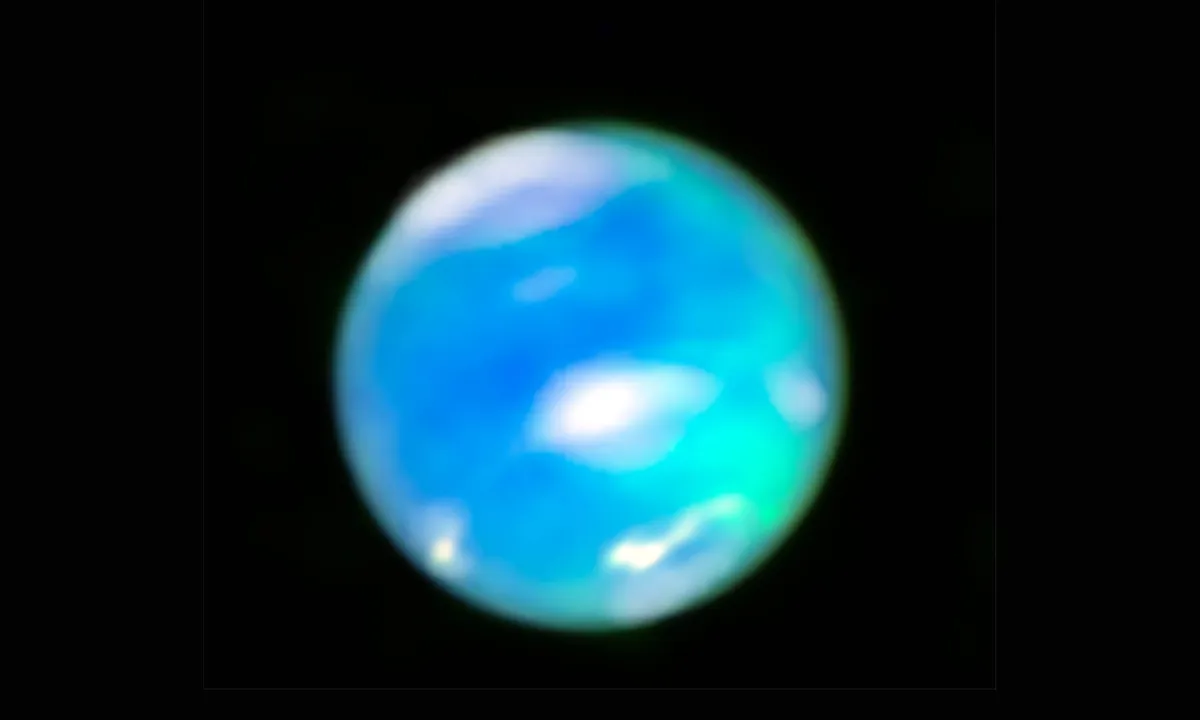
In a groundbreaking achievement, NASA’s James Webb Space Telescope (JWST) has finally unveiled the enigmatic auroras of Neptune, marking a significant milestone in planetary science. For the first time, astronomers have obtained vivid images showing auroral activity illuminating the planet's upper atmosphere. This remarkable discovery provides compelling evidence of energetic particles colliding with Neptune’s ionosphere, resulting in a dazzling display of light.
The energetic particles that create these stunning auroras typically originate from the Sun. They travel along magnetic fields before striking Neptune’s atmosphere, leading to the bright emissions captured in Webb’s near-infrared images. While the auroras of other gas giants, including Jupiter, Saturn, and Uranus, have been observed previously, Neptune’s auroras have eluded confirmation until now.
This significant finding supports the earlier hints provided by NASA’s Voyager 2 during its flyby of Neptune in 1989, which suggested the possible existence of auroras. However, no instrument had been able to conclusively verify this phenomenon until JWST's recent observations. The giant blue planet has kept its secrets hidden, despite extensive observations using some of Earth’s most advanced telescopes.
Lead author Henrik Melin of Northumbria University, who conducted the research while at the University of Leicester, expressed his astonishment: “It was so stunning to not just see the auroras, but the detail and clarity of the signature really shocked me.” The high-resolution images were captured in June 2023 using JWST's Near-Infrared Spectrograph, allowing astronomers to gather vital data about Neptune’s atmospheric temperature and chemical composition.
For the first time, scientists could clearly identify a strong emission line from H3+, a molecule that forms during auroral activity. This signature glow appeared as cyan-colored splotches in the images of Neptune captured by Webb. The presence of H3+ serves as a reliable indicator of auroral activity in gas giants, a crucial marker that scientists have successfully used on Jupiter, Saturn, and Uranus.
According to Heidi Hammel, a Webb interdisciplinary scientist at the Association of Universities for Research in Astronomy (AURA), “H3+ has been a clear signifier on all the gas giants of auroral activity, and we expected to see the same on Neptune.” This confirmation reinforces the theory that the evidence of Neptune's auroras was always present but remained hidden until now.
Unlike Earth, where auroras predominantly occur near the poles, Neptune’s auroras manifest in the mid-latitudes. This unique behavior can be attributed to Neptune’s magnetic field, which Voyager 2 discovered to be tilted 47 degrees off the planet’s rotation axis. This tilt influences where the magnetic field lines converge, displacing the auroras from the expected polar regions and adding complexity to Neptune’s space weather dynamics.
The data obtained from JWST also revealed that Neptune's upper atmosphere has significantly cooled since 1989. Melin noted, “I was astonished – Neptune’s upper atmosphere has cooled by several hundreds of degrees.” The temperature recorded in 2023 was just over half of what was observed in 1989. This cooling trend likely contributes to the diminished brightness of Neptune’s auroras, explaining why their detection has been challenging for decades.
This remarkable discovery paves the way for a new era in the exploration of ice giants like Neptune. Scientists plan to monitor the planet through a complete solar cycle, which spans approximately 11 years. Understanding changes in solar activity could yield further insights into Neptune’s magnetic field and atmospheric dynamics.
As Leigh Fletcher from Leicester University, a co-author of the study, emphasized, “This observatory has finally opened the window onto this last, previously hidden ionosphere of the giant planets.” The findings from Webb’s observations were conducted as part of Hammel’s Guaranteed Time Observation program 1249, and the results have been published in Nature Astronomy.
This groundbreaking research not only enhances our understanding of Neptune but also sets the stage for future missions aimed at unraveling the mysteries of our solar system’s farthest reaches.
Like what you read? Subscribe to our newsletter for engaging articles, exclusive content, and the latest updates. Check us out on EarthSnap, a free app brought to you by Eric Ralls and Earth.com.